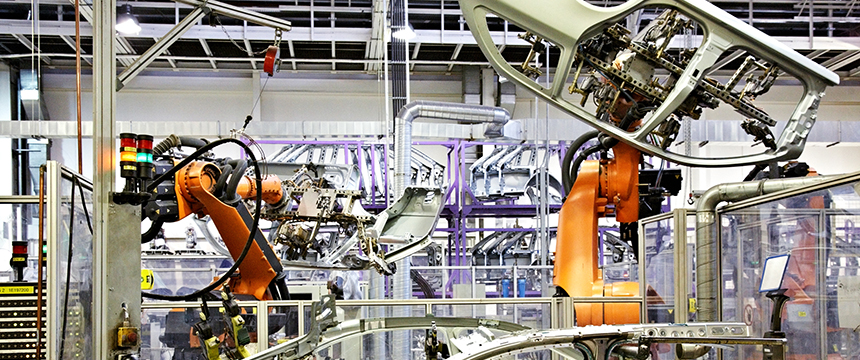Chinese Mobility in the USMCA Region: A Choking Process that will Upend the U.S. and Mexican Automotive Industries
Key Legal Insights from Foley’s Automotive Team

The United States-Mexico-Canada Agreement (USMCA) automotive sector must be prepared to navigate a new set of requirements that will likely reshape supply chains, impact costs, and alter the competitive dynamics within the industry. Further, with the United States government continuing to impose new international trade restrictions on imports from Mexico – including a surprise July 10, 2024 announcement that steel articles and their derivatives must be “melted and poured” in Mexico, Canada, or the United States to receive exemptions from the Section 232 special tariffs – it is apparent that Mexican exporters need to carefully monitor USMCA developments and prepare to react to abrupt changes in the international trade landscape.[1]
In this article we identify the short- and medium-term impacts of the incoming complex – and inevitable – scenarios involving Chinese automotive inputs and brands looking to benefit from USMCA market regulations.
What is the Current Treatment of USMCA-Originating Vehicles Produced Utilizing Chinese Parts or by Chinese brands?
The USMCA provides that if an original equipment manufacturer (OEM) located in the USMCA region complies with the Agreement´s Product-Specific Rules of Origin (ROO) for Automotive Goods (most notably, Regional and Labor Value Content requirements), and uses originating steel and aluminium, the resulting vehicle is deemed to be USMCA-originating. Thus, at least for now, a USMCA-originating vehicle’s brand, the origin of its components, and the parent company’s ownership and nationality are irrelevant to the treatment that such vehicle receives under the USMCA.[2]
The key question, though, is how long will this preferential treatment last? As described below, two scenarios – one short- and one medium-term – could significantly impact the ability of companies to import USMCA-originating vehicles from Mexico into the United States, due to incoming U.S. regulatory developments that could impact the application of the Agreement´s originating rules.
Short-Term (Fall 2024) Scenario
The U.S. Department of Commerce is in the rulemaking process on Information and Communications Technology and Services (ICTS) used in connected vehicles. Specifically, the rulemaking process focuses on ICTS that are designed, developed, manufactured, or supplied by persons owned by, controlled by, or subject to the jurisdiction or direction of the Chinese Government, Chinese non-government persons, or other foreign adversaries (Hong Kong, Cuba, Iran, North Korea, Russia, or the Venezuelan Maduro Regime).[3] New rules are expected to be issued by U.S. Commerce in the fall of 2024. The rules could include taking the “extreme action” of banning Chinese-connected vehicles from entering the U.S. market.[4]
It is worth noting that this rulemaking process is not directly related to the implementation or enforcement of the USMCA. Instead, its purpose is to determine how ICTS that are integral to connected vehicles could present an undue or unacceptable risk to U.S national security.
Under its own terms, the USMCA countries are permitted to implement measures that, through a self-evaluation process, each government considers necessary for the fulfillment of its own essential security interests.[5] Therefore, even if the rulemaking process results in a complete ban on connected vehicles with Chinese ICTS for U.S. national/essential security reasons, this measure arguably would not violate the USMCA; given the stakes and breadth of this rulemaking, we believe that it is a matter of when, and not if, a USMCA binational panel tests this assumption.
It is also important to highlight that this rulemaking process does not focus on a vehicle’s country of origin (be it USMCA, European, or otherwise) in determining whether such vehicle may be subject to bans or other restrictions; instead, the focus is solely on the origin of the ICTS contained in a connected vehicle. The critical question is whether such technology and services are designed, developed, manufactured, or supplied by persons owned by, controlled by, or subject to the jurisdiction or direction of the Chinese government or Chinese nationals.
In a variety of contexts, the U.S. government has treated private Chinese companies as being potentially controlled by the Chinese government. In other words, it treats potential access to sensitive personal data or technology by private Chinese companies as analogous to the Chinese government having access to such information, under the assumption that the Chinese government can extract such information from private companies at any point. Thus, although the rulemaking is not yet complete, it would be prudent for companies to start planning under the assumption that Chinese ICTS in connected vehicles, regardless of their origin, will likely be banned from entering the U.S. market.
Companies should begin evaluating their supply chains to determine whether relevant products or processes incorporate the design, development, manufacturing, or sourcing of Chinese ICTS. If that is the case, USMCA-originating vehicles, or vehicles of any other country of origin, could potentially be banned from entering the U.S. market as early as the fall of 2024.
It is unknown how much time the U.S. Department of Commerce may give automakers to comply with any new requirements. ICTS are at the core of how modern vehicles operate, and changing such technology and services is not a simple matter. Further, the industry is characterized by lengthy qualification processes and even lengthier product cycles. Prudent companies should start planning now how they will address the range of potential outcomes.
Medium-Term Scenario (Mid-2026 USMCA Revision which Begins Long Before That Date)
On July 1, 2026, the USMCA countries are required to initiate a joint review of the Agreement´s operation to confirm (or not) their desire to extend it for another sixteen-year period. If confirmed, every following six-year review could extend the Agreement for another 16 years.[6]
Before commencing the joint review, by July 1, 2025, the U.S. International Trade Commission will issue its second of five reports of the Economic Impact and Operation of USMCA´s Automotive Rules of Origin. This document will expressly report on the operation of the ROOs on the competitiveness of the United States, considering developments in technology and other related matters.[7]
By early November 2025, the U.S. Trade Representative (USTR) will issue a Federal Register notice soliciting public comments relating to USMCA´s operation. By the end of January 2026, the USTR must report to the relevant Congressional committees the precise guidance for action to be proposed at the joint review, and whether the U.S. recommends extending the USMCA for an additional sixteen-year period.
Notably, the USTR has previously found that the Chinese economic model is a state-supported system built to dominate and take over entire industries, including EVs.[8] The go-to-market strategy of Chinese OEMs to produce EVs in Mexico fits squarely within the scenario that the USTR has found to be problematic, and which the USTR is now considering how best to address.
USMCA´s top trade officials – Ambassador Tai, Minister Ng, and Secretary Buenrostro – have recently agreed to expand their collaboration on issues related to non-market policies and practices, such as China´s, that undermine the Agreement and harm USMCA-region workers, “including in the automotive and other sectors.” [9] USTR also finished its four-year review of the special Section 301 tariffs, in which it not only confirmed that the special tariffs on most Chinese products would remain in place, but also that the administration would entertain only a very limited exclusions process. Further, President Biden issued an Executive Order imposing additional tariffs on a targeted set of goods, which include 100% tariffs on EVs.[10]
Against this backdrop, the role that the Chinese EV industry plays in Mexican manufacturing, and even its role as a supplier of EV parts and components, will factor prominently into how USMCA is viewed by the U.S. government, including the operation of the automotive-specific sections of the USMCA. Whether justified or not, the characterization of China as a non-market economy, as well as suspicions that China is looking for ways to circumvent restrictions on the ability of its automotive industry to gain access to the U.S. market, are shadows that will color the mobility industry scenarios in the incoming USMCA 2026 joint review.
* * *
Foley is here to help you through all aspects of rethinking your long-term business strategies, investments, partnerships, and technology. Contact the authors, your Foley relationship partner, or our Automotive Team to discuss and learn more.
[1] See “A Proclamation on Adjusting Imports of Steel Into the United States,”.
[2] Moreover, USMCA-originating vehicles would not be subject to the forthcoming increase in Section 301 import duties on Chinese products, most notably, the duty increases that apply to electric vehicles, semiconductors, and batteries.
[3] Securing the Information and Communications Technology and Services Supply Chain: Connected Vehicles, 89 FR 15066 (March 1, 2024).
[4] US to issue rules on Chinese connected vehicles this autumn. Reuters.com. May 15, 2024, https://www.reuters.com/world/us/us-issue-rules-chinese-connected-vehicles-this-fall-2024-05-15/
[5] USMCA Article 32.2.1.(b).
[6] USMCA Article 34.7.
[7] International Trade Commission, Investigation No. 332–600, USMCA Automotive Rules of Origin:
Economic Impact and Operation, 2025, 89 FR 26919 (April 16, 2024). Written submissions are open until November 18, 2024.
[8] Press conference addressing the recent Section 301 measure. May 14, 2024./p>
[9] United States, Canada, and Mexico Joint Statement of the Fourth Meeting of the USMCA//CUSMA//T-MEC Free Trade Commission. May 23, 2024, https://ustr.gov/about-us/policy-offices/press-office/press-releases/2024/may/united-states-canada-and-mexico-joint-statement-fourth-meeting-usmcacusmat-mec-free-trade-commission
[10] White House, “President Biden Takes Action to Protect American Workers and Businesses from China’s Unfair Trade Practices,”.



